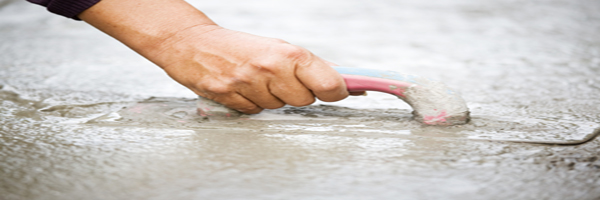How Bad Can Excess Moisture Be?
 How bad could it be to ignore a little water vapor in concrete slabs? Well, that depends on the size of your budget for concrete flooring remediation. In tight budgets and tighter time frames, most builders don’t want to even consider it. However, remediation will be needed in some form if the professionals in the building chain ignore concrete moisture content.
How bad could it be to ignore a little water vapor in concrete slabs? Well, that depends on the size of your budget for concrete flooring remediation. In tight budgets and tighter time frames, most builders don’t want to even consider it. However, remediation will be needed in some form if the professionals in the building chain ignore concrete moisture content.
Does Concrete Absorb Water?
Yes, concrete can absorb water because it’s porous like a sponge. When the ambient relative humidity is high, concrete can absorb water vapor (moisture) from the air. When the relative humidity is low, water will evaporate from the concrete into the ambient environment.
Fundamental
Concrete slabs contain moisture content from the moment of their creation. Water is part of every concrete mixture, and even thoroughly dried slabs can absorb and release moisture content with changes in ambient relative humidity (RH). Healthy concrete slabs will still retain water vapor, but unaddressed excess moisture content leads to a host of concrete slab moisture problems.
While concrete slabs form, moisture content moves from the bottom of the slab to the surface. It evaporates at a rate which is largely influenced by the relative humidity (RH) of the slab’s ambient environment. When ambient RH is high, concrete actually absorbs moisture content; when ambient RH is low, concrete releases water vapor more rapidly. Thus, the rate of overall concrete moisture evaporation changes due to many variables: RH, concrete mixture, geographic climate, aggregate materials and the presence of vapor retarders, to name a few.
Professionals use concrete moisture testing products to monitor moisture content migration once the slab is poured. It is crucial to assess MC with a reliable moisture test system, because an absence of adequate data may cause installers to apply flooring on top of concrete before it has fully dried.
Dysfunctional
 “Nah, let’s go. We’ve got a schedule to keep”: the definition of concrete slab moisture problems. There are many, and they all require costly remediation. Those who do ignore concrete moisture meter readings, or those who don’t measure MC, are more likely to call slab repair professionals. Therefore, it’s important to learn the following terms of concrete slab dysfunction.
“Nah, let’s go. We’ve got a schedule to keep”: the definition of concrete slab moisture problems. There are many, and they all require costly remediation. Those who do ignore concrete moisture meter readings, or those who don’t measure MC, are more likely to call slab repair professionals. Therefore, it’s important to learn the following terms of concrete slab dysfunction.
Spalling (a.k.a. Surface Scaling): When surface concrete breaks off to a depth of .05″ to .19″. This can occur when the concrete has not cured properly, when calcium or sodium chloride deicing salts are inappropriately strong, or when the concrete has not had enough air introduced (entrainment) for slabs subject to extreme temperature changes.
Cracking: cracks which are not intentional. This can occur due to excess water in the mix, if the concrete has dried too rapidly, or due to problems with the initial concrete mix.
Dusting: This occurs on concrete surfaces which are weakened by excess water (called “bleed water”) at the surface during finishing.
Popouts: a cone-shaped fragment which breaks out of the concrete surface. Popouts occur when aggregates expand beyond the slab capacity due to high rates of moisture absorption.
 Crazing: a network of random cracks whose only causal connection is established when the concrete surface shrinks excessively, generally caused by high heat/low humidity during drying.
Crazing: a network of random cracks whose only causal connection is established when the concrete surface shrinks excessively, generally caused by high heat/low humidity during drying.
Blistering: concrete blisters can reach up to three inches in diameter. This occurs when troweling leaves voids on the concrete surface and is more common when troweling occurs too soon.
Measurable
Concrete slab moisture problems like these can largely be avoided before they happen with the proper use of concrete moisture testing. Excess moisture content can be managed before it causes catastrophe.
The Rapid RH from Wagner Meters is a concrete moisture meter test method designed to provide accurate, cost-effective concrete moisture content management.
Surface-based test methods may prevent some surface problems, but cannot provide accurate and complete data for a concrete slab. Rapid RH features Smart Sensor technology that places sensors (in situ probes) inside the concrete slab to provide digital MC data at various locations on the slab.
With Rapid RH , installers achieve a thorough composite assessment of concrete moisture content before moving forward with flooring applications, and also fully comply with ASTM standards for concrete testing. The Wagner Meters Rapid RH saves time on moisture measurement and on money needed to cover remediation costs when you ignore slab moisture content.
Measure it, and make it right.